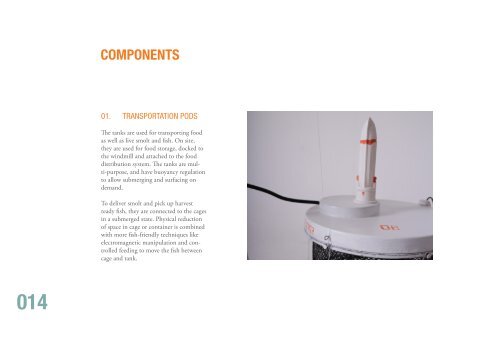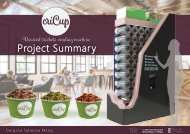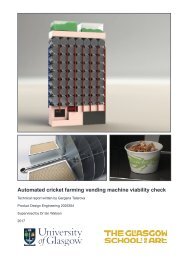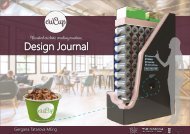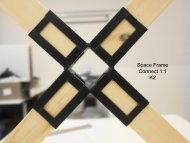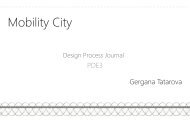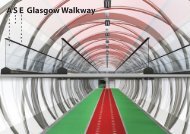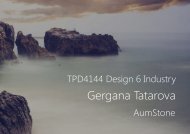D5_GR4_FINAL_DOCUMENTATION_spreads
Create successful ePaper yourself
Turn your PDF publications into a flip-book with our unique Google optimized e-Paper software.
COMPONENTS<br />
01. TRANSPORTATION PODS<br />
The tanks are used for transporting food<br />
as well as live smolt and fish. On site,<br />
they are used for food storage, docked to<br />
the windmill and attached to the food<br />
distribution system. The tanks are multi-purpose,<br />
and have buoyancy regulation<br />
to allow submerging and surfacing on<br />
demand.<br />
To deliver smolt and pick up harvest<br />
ready fish, they are connected to the cages<br />
in a submerged state. Physical reduction<br />
of space in cage or container is combined<br />
with more fish-friendly techniques like<br />
electromagnetic manipulation and controlled<br />
feeding to move the fish between<br />
cage and tank.<br />
03. WINDMILL<br />
The windmill is a lot taller than onshore<br />
ones, being 250 metres tall.<br />
It is therefore able to generate a lot of<br />
power, and is a sustainable source of<br />
energy for both the fish farm and locations<br />
on the mainland. The feeding system<br />
is centred at the windmill. The windmill<br />
also pumps air into the cage for the<br />
features where this is needed.<br />
02. CATAMARAN<br />
Tanks are transported by nimble<br />
catamarans - becoming trimarans when<br />
grasping onto the semi-boatshaped tank.<br />
These catamarans avoid the added weight<br />
needed to store the container in the ship;<br />
iAnstead it is simply docked to the ship.<br />
The catamarans have a sail capability, and<br />
electric propulsion that they can recharge<br />
at the windmill.<br />
014<br />
015


